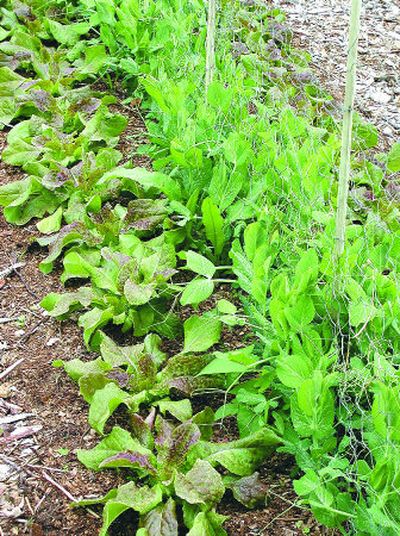Plant a row and contribute to a good cause

It’s been a pretty good year for our region. I’m hearing more upbeat comments about people doing well at work, a thriving real estate market and more opportunities all around.
But not everyone is benefiting from the boom. There are still people struggling to find work, pay bills, put food on the table and buy gasoline out of the same small pot of money.
Barb Bennett, director of the Spokane Valley Food Bank saw a drop in clients at her food bank in January and February.
“In March, it picked right back up again,” she said. Everything in our “near nature” world isn’t perfect.
But I’ve lived here close to 30 years and I know this community takes care of its own. I have an opportunity for you to continue that tradition. This year when you plant your home vegetable garden, plant an extra row and when the produce gets ripe, donate it to your local food bank in the name of Plant a Row for the Hungry.
Plant an extra row
Plant a Row for the Hungry is a community program run locally in Spokane by The Inland Empire Gardeners and in Bonner County by the Bonner County Master Gardeners and nationally by the Garden Writers Association. The goal is to get abundant vegetables from home gardens into the hands of people who can use them.
Grocery list
Curious about what to plant? Most food banks find that vegetables that are commonly found in the grocery store are the most popular. People recognize them and know how to use them. Good choices include peas, beans, corn, tomatoes, potatoes, winter and summer squash, cucumbers, tree fruit, cherries, cabbage, broccoli, Brussels sprouts, carrots, root crops, onions and garlic to name a few. Bennett said she has already received fresh rhubarb and it went out the door very quickly.
When your produce gets ripe, take it to your nearest food bank. Any amount is welcome; even a single pound, because each pound is the equivalent of four servings of vegetables that still have most of their nutrients and flavor.
Because many of the food banks are small and don’t have a lot of storage or refrigeration space, sturdy vegetables that can take a day or two sitting on a shelf are best. Many food banks are open only one or two days a week and have set days and hours to receive food, so call and check donation times before you harvest your produce.
Ask for a Plant a Row for the Hungry receipt. Because the Garden Writers Association that administers the program is a 501(c)3 charitable organization, you can use the receipt to take $1.50 per pound of donation off your federal income taxes.
So get planting folks. Your neighbors will thank you.